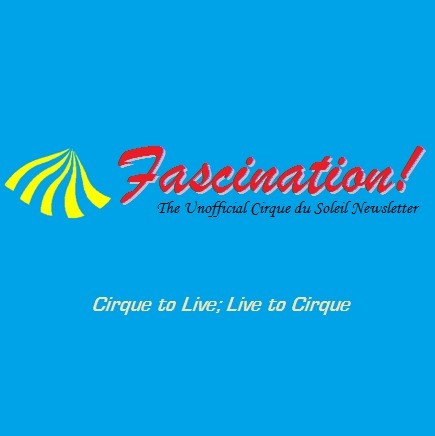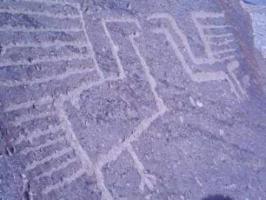Copy Link
Add to Bookmark
Report
AIList Digest Volume 4 Issue 209

AIList Digest Thursday, 9 Oct 1986 Volume 4 : Issue 209
Today's Topics:
Bibliographies - Correction and Future SMU Bibliography Labels &
Recent Kansas Technical Reports & UCLA Technical Reports
----------------------------------------------------------------------
Date: WED, 10 JAN 84 17:02:23 CDT
From: E1AR0002%SMUVM1.BITNET@WISCVM.WISC.EDU
Subject: Correction and Future SMU Bibliography Labels
[Lawrence Leff at SMU, who provides all those lengthy bibliographies and
article summaries, has sent the following correction for the Subject line
I added to one of the bibliographies. -- KIL]
ai.bib35 was mistitled as references on computer vision/robotics.
This reference list contained articles on such subjects as neural
networks, urban planning, logic programming, and theorem proving as
well as vision/robotics.
In order to prevent this problem in the future, I will entitling the
materials as ai.bibnnxx
where nn is a consecutive number and
xx is C for citations without descriptions
TR for technical reports
AB for citations for citations with descriptions
(annotated bibliographies)
Thus ai.bib40C means the 40th AI list in bibliography format
and the C indicates that we have a bunch of bib format references
without significant commentary.
The nn is unique over all types of bibliographies. Thus, if there
were an ai.bib40C, then there will NOT be an ai.bib40TR or ai.bib40AB.
These designations are actually the file names for the list on my hard disk.
The shell script that wraps up the item for mailing will automatically put
the file name in the subject field. If one of your readers uses this to
designate a file in mail to me, I can thus trivially match their query
against a specific file.
Note that I no longer will be separating out references by subject
matter. The keyword system is much more effective for allowing people
interested in specific subfields of ai to see the articles they find relevant.
Sadly the bib system program "listrefs" is having problems with citations
that contain long abstracts or commentary information. Thus TR and AB
type references will probably cause this program to spec check. I spent
a whole day trying to isolate the problem but have been unsuccessful.
One other self-described bib expert has the same problem. All references
are indexable by "invert".
TR and AB type references will not use bib definition files and thus
are usable with the refer package from AT&T. If I were not to use bib
definition files with C type reference lists, the number of bytes transmitted
for their mailing would triple.
------------------------------
Date: Fri, 5 Sep 86 15:05:40 CDT
From: Glenn Veach <veach%ukans.csnet@CSNET-RELAY.ARPA>
Subject: Recent Kansas Technical Reports
Following is a list of technical reports which have recently
been issued by the department of Computer Science of The
University of Kansas in conjunction with research done in
the department's Artificial Intelligence Laboratory.
Requests for any and all Technical Reports from the Department of
Computer Science and it's various laboratories at The University
of Kansas should be sent to the following address:
Linda Decelles, Office Manager
110 Strong Hall
Department of Computer Science
The University of Kansas
Lawrence, KS 66045
U.S.A.
%A Glenn O. Veach
%T The Belief of Knowledge: Preliminary Report
%I Department of Computer Science, The University of Kansas
%R TR-86-15
%X As various researchers have attempted to present logics which
capture epistemic concepts they have encountered several difficulties.
After surveying the critiques of past efforts we propose a logic which
avoids these same faults. We also closely explore fundamental issues
involved in representing knowledge in ideal and rational agents and
show how the similarities and differences are preserved in the logic
we present. Several examples are given as supporting evidence for our
conclusions. To be published in the proceedings of the 2nd Kansas
Conference: Knowledge-Based Software Development. 12 pp.
%A Glenn O. Veach
%T An Annotated Bibliography of Systems and Theory for Distributed
Artificial Intelligence
%I Department of Computer Science, The University of Kansas
%R TR-86-16
%X This paper summarizes, with extensive comment, the results of an
initial investigation of the work in distributed AI. Some forty-plus
articles representing the major schools of thought and development are
cited and commented upon.
%A Frank M. Brown
%T Semantical Systems for Intensional Logics Based on the Modal
Logic S5+Leib
%I Department of Computer Science, The University of Kansas
%R TR-86-17
%X This paper contains two new results. First it describes how
semantical systems for intensional logics can be represented in
the particular modal logic which captures the notion of logical
truth. In particular, Kripke semantics is developed from this
modal logic. The second result is the development in the modal
logic of a new semantical system for intensional logics called
B-semantics. B-semantics is compared to Kripke semantics and it
is suggested that it is a better system in a number of ways.
------------------------------
Date: Tue, 7 Oct 86 13:32:32 PDT
From: Judea Pearl <judea@LOCUS.UCLA.EDU>
Subject: new Technical Reports
The following technical reports are now available from the
Cognitive Systems Laboratory
Room 4712, Boelter Hall
University of California
Los-Angeles, CA, 90024
or: judea@locus.ucla.edu
_______
Pearl, J., ``Bayes and Markov Networks: a Comparison of Two
Graphical Representations of Probabilistic Knowledge,'' Cognitive
Systems Laboratory Technical Report (R-46), September 1986.
ABSTRACT
This paper deals with the task of configuring effective graphical
representation for intervariable dependencies which are embedded
in a probabilistic model. It first uncovers the axiomatic basis
for the probabilistic relation `` x is independent of y , given
z ,'' and offers it as a formal definition for the qualitative
notion of informational dependency. Given an initial set of such
independence relationships, the axioms established permit us to
infer new independencies by non-numeric, logical manipulations.
Using this axiomatic basis, the paper determines those properties
of probabilistic models that can be captured by graphical
representations and compares the characteristics of two such
representations, Markov Networks and Bayes Networks. A Markov
network is an undirected graph where the links represent
symmetrical probabilistic dependencies, while a Bayes network is
a directed acyclic graph where the arrows represent causal
influences or object-property relationships. For each of these
two network types, we establish: 1) a formal semantic of the
dependencies portrayed by the networks, 2) an axiomatic
characterization of the class of dependencies capturable by the
network, 3) a method of constructing the network from either hard
data or expert judgments and 4) a summary of properties relevant
to its use as a knowledge representation scheme in inference
systems.
_______
Zukerman, I. & Pearl, J., ``Comprehension-Driven Generation of
Meta-Technical Utterances in Math Tutoring,'' UCLA Computer
Science Department Technical Report CSD-860097 (R-61).
ABSTRACT
A technical discussion often contains conversational expressions
like ``however,'' ``as I have stated before,'' ``next,'' etc.
These expressions, denoted Meta-technical Utterances (MTUs) carry
important information which the listener uses to speed up the
comprehension process. In this research we model the meaning of
MTUs in terms of their anticipated effect on the listener
comprehension, and use these predictions to select MTUs and weave
them into a computer generated discourse. This paradigm was
implemented in a system called FIGMENT, which generates
commentaries on the solution of algebraic equations.
_______
Pearl, J., ``Jeffrey's Rule and the Problem of Autonomous
Inference Agents,'' UCLA Cognitive Systems Laboratory Technical
Report (R-62), June 1986, UCLA CSD #860099, June 1986.
ABSTRACT
Jeffrey's rule of belief revision was devised by philosophers to
replace Bayes conditioning in cases where the evidence cannot be
articulated propositionally. This paper shows that unqualified
application of this rule often leads to paradoxical conclusions,
and that to determine whether or not the rule is valid in any
specific case, one must first have topological knowledge about
one's belief structure. However, if such topological knowledge
is, indeed, available, belief updating can be done by traditional
Bayes conditioning; thus, arises the question of whether it is
ever necessary to use Jeffrey's rule in formalizing belief
revision.
_______
Pearl, J., ``Distributed Revision of Belief Commitment in Multi-
Hypotheses Interpretation,'' UCLA Computer Science Department
Technical Report CSD-860045 (R-64), June 1986; presented at the
2nd AAAI Workshop on Uncertainty in Artificial Intelligence,
Philadelphia, PA., August 1986.
ABSTRACT
This paper extends the applications of belief-networks models to
include the revision of belief commitments, i.e., the categorical
instantiation of a subset of hypotheses which constitute the most
satisfactory explanation of the evidence at hand. We show that,
in singly-connected networks, the most satisfactory explanation
can be found in linear time by a message-passing algorithm
similar to the one used in belief updating. In multiply-
connected networks, the problem may be exponentially hard but, if
the network is sparse, topological considerations can be used to
render the interpretation task tractable. In general, finding
the most probable combination of hypotheses is no more complex
than computing the degree of belief for any individual
hypothesis.
_______
Geffner, H. & Pearl, J., ``A Distributed Approach to Diagnosis,''
UCLA Cognitive Systems Laboratory Technical Report (R-66),
October 1986;
ABSTRACT
The paper describes a distributed scheme for finding the most
likely diagnosis of systems with multiple faults. The scheme
uses the independencies embedded in a system to decompose the
task of finding a best overall interpretation into smaller sub-
tasks of finding the best interpretations for subparts of the
net, then combining them together. This decomposition yields a
globally-optimum diagnosis by local and concurrent computations
using a message-passing algorithm. The proposed scheme offers a
drastic reduction in complexity compared with other
methods: attaining linear time in singly-connected networks and,
at worst, exp ( | cycle-cutset | ) time in multiply-connected
networks.
_______
Pearl, J., ``Evidential Reasoning Using Stochastic Simulation of
Causal Models,'' UCLA Cognitive Systems Laboratory Technical
Report (R-68-I), October 1986.
ABSTRACT
Stochastic simulation is a method of computing probabilities by
recording the fraction of time that events occur in a random
series of scenarios generated from some causal model. This paper
presents an efficient, concurrent method of conducting the
simulation which guarantees that all generated scenarios will be
consistent with the observed data. It is shown that the
simulation can be performed by purely local computations,
involving products of parameters given
with the initial specification of the model. Thus, the method
proposed renders stochastic simulation a powerful technique of
coherent inferencing, especially suited for tasks involving
complex, non-decomposable models where ``ballpark'' estimates of
probabilities will suffice.
_______
Pearl, J., ``Legitimizing Causal Reasoning in Default Logics''
(note), UCLA Cognitive Systems Laboratory Technical Report (R-
69), September 1986.
ABSTRACT
The purpose of this note is to draw attention to certain aspects
of causal reasoning which are pervasive in ordinary discourse
yet, based on the author's scan of the literature, have not
received due treatment by logical formalisms of common-sense
reasoning. In a nutshell, it appears that almost every default
rule falls into one of two categories: expectation-evoking or
explanation-evoking. The former describes association among
events in the outside world (e.g., Fire is typically accompanied
by smoke.); the latter describes how we reason about the world
(e.g., Smoke normally suggests fire.). This distinction is
clearly and reliably recognized by all people and serves as an
indispensible tool for controlling the invocation of new default
rules. This note questions the ability of formal systems to
reflect common-sense inferences without acknowledging such
distinction and outlines a way in which the flow of causation can
be summoned within the formal framework of default logic.
_______
Dechter, R. & Pearl, J., ``The Cycle-Cutset Method for Improving
Search Performance in AI Applications,'' UCLA Cognitive Systems
Laboratory Technical Report (R-67); submitted to the 3rd IEEE
Conference on Artificial Intelligence Applications.
ABSTRACT
This paper introduces a new way of improving search performance by
exploiting an efficient method available for solving tree-structured
problems. The scheme is based on the following observation: If, in
the course of a backtrack search, we remove from the constraint-graph
the nodes corresponding to instantiated variables and find that the
remaining subgraph is a tree, then the rest of the search can be
completed in linear time. Thus, rather than continue the search
blindly, we invoke a tree-searching algorithm tailored to the topology
of the remaining subproblem. The paper presents this method in detail
and evaluates its merit both theoretically and experimentally.
------------------------------
End of AIList Digest
********************

























